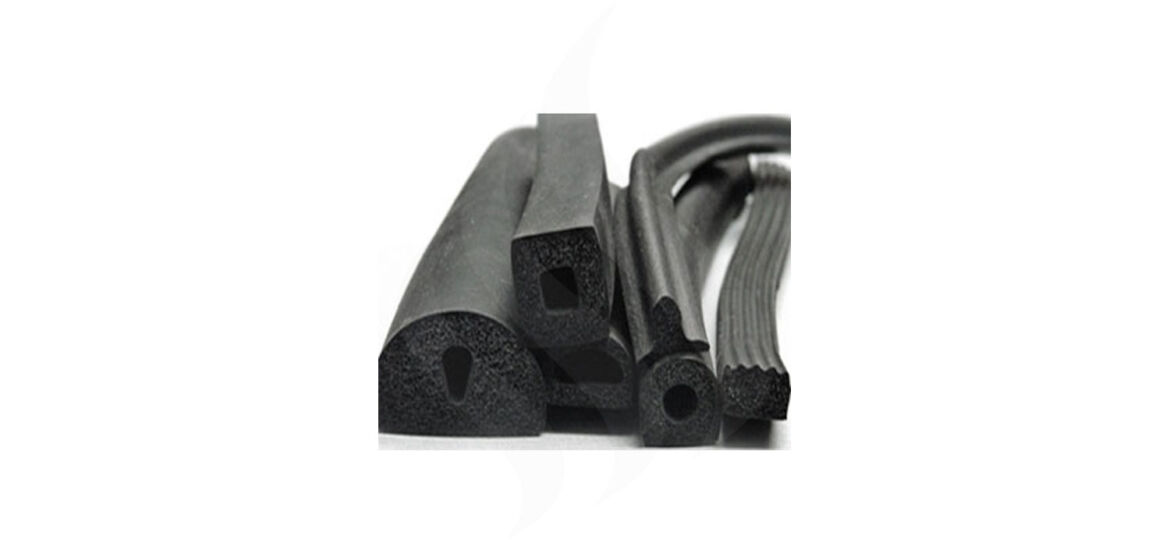
General background: Sponge Profiles
Sponge profiles are industrial rubber products that are used for shock absorption, sealings and provide cushioning. They have a high strength-to-weight ratio, and although these profiles rebound well, they are softer & less compression resistant than solid rubber.
The materials that are used to make them are EPDM, Neoprene, Silicone, Nitrile, and other elastomeric materials.
Sponge rubber extrusion
The profiles of sponge rubber extrusions are created through continuous extrusion and vulcanization or by discontinuous extrusion and steam vulcanization. Each of these procedures have unique benefits as well as drawbacks. One should make it a practice to gather complete details regarding the application of the rubber profile so that all of the profile’s details can be considered at the earliest feasible stage of development.
Challenges faced by Team Saga while extruding sponge profile
We had an RFQ from a Tier I OEM company for very small sponge profiles wherein compression deflection was mentioned as per norms instead of hardness. The profiles being very soft – hardness measurement is very subjective and hence disallowed in certain standards (latest ASTM standards).
The RFQ required reading and understanding the standards so that we could make a profile which would pass the required standards.
We developed a compound to match the standards and sent a sample profile in some other size only for verification of compression deflection readings and the sample went through.
Now came the bigger challenge of making such a tiny profile (weight per meter only 30gms) on our 75 mm extruder. We could somehow make small sample lots for the customer wherein out of 1,000 meters produced, only 50% would meet the dimensional tolerances.
Solution
As the customer only needed pilot lots for now, Team Saga kept working on the strategy of making small sample lots and tried multi cavity tooling, bleeder hole, etc. for matching dimensions and much more. The refinements gave some improvements but were not good enough for commercial orders because having 10% rejection rate is not a sound strategy.
Meanwhile, pilot lots were made and cleared for further fitment testing with some alterations and new tooling. Team Saga strategically planned for a second CV line as we had our first line was running at nearly 100% capacity. It was at this point of time that we started discussing about the screw size with our tool maker / machinery manufacturer and also internally checked the product line we were making so that with the new line, at least 40% of the existing orders as well as fresh orders could be shifted to a new smaller extruder. We were advised by our tool maker to go for a smaller size extruder. This actually flies in the face of conventional logic as we try to maximize output by having bigger screw sizes.
We were already producing 40 hardness EPDM compound for different product applications and on the bigger extruder it gave a little porosity. Our own experience too pointed in the direction of small extruder size for sponge profiles since back pressure is an issue with such low hardness compounds. With all this, we decided to go for a smaller size extruder and, as luck would have it even before the line was actually installed, our customer had started asking for commercial quantities of the small sponge profile. We now pushed the machine installation team and took the first trial on the new line of the same sponge profiles and voila – the accuracy was much better. We could produce the small profiles just like we make regular hardness profiles with 99 to 100% accuracy for dimensions.

Closed cell sponge rubber profiles available at Saga
Saga offers closed cell sponge of EPDM material that has its applications in various industries. Balloon-like cells that store nitrogen gas and block the flow of air or water at low pressures can be found in closed cell sponge profiles. Strong sealing ability, good compression, and recovery properties are all combined in closed cell sponge. Both EPDM and neoprene are commonly used materials whereas for high-temperature applications silicone is used.
Related Sponge products available at Saga
At Saga we offer various sponge products that has its usage in automotive industry (, railway industry, thermal industry, etc. Some of these sponge products include closed cell sponge profile, Silicone sponge profile, EPDM sponge profile, Sponge drum seals, Saga EPDM sponge door seals, etc.
Links:-






